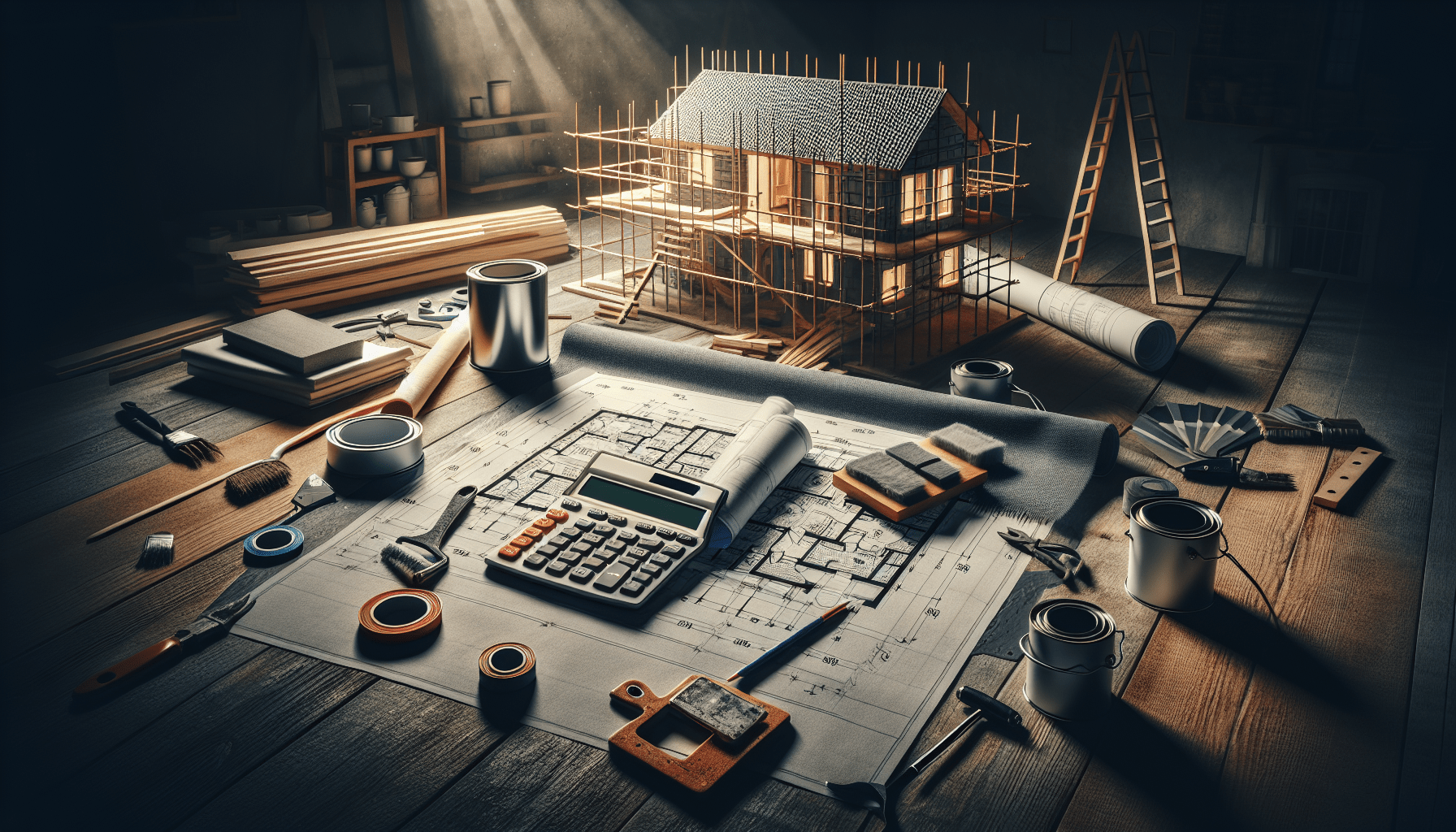What Is The Primary Disadvantage Of A Construction Permanent Loan?
October 17, 2024 | by neoguruman@gmail.com

Have you ever considered building your own home instead of buying one? It’s a dream for many, but with that dream comes a variety of financial decisions. One option often discussed is a construction permanent loan. While these loans can help you finance your dream home, it’s also important to weigh their disadvantages.
Understanding Construction Permanent Loans
Before hopping into the disadvantages, it’s helpful to grasp what a construction permanent loan is. This type of loan funds the construction of your home and then converts into a permanent mortgage once the construction is complete. Essentially, it merges two loans into one, simplifying the process for you.
How Does It Work?
When you opt for a construction permanent loan, you typically go through a single application and approval process. This means that you won’t need to reapply for a mortgage once construction finishes. Instead, your loan will roll over to a traditional mortgage automatically.
-
Loan Disbursement: Initially, funds are disbursed in stages as construction progresses. These disbursements are usually based on the completion of certain milestones, so the builder isn’t drawing from it all at once.
-
Repayment Terms: Your repayment terms will begin after the construction is complete, transitioning into a mortgage with terms that can last for 15 to 30 years.
-
Interest Rates: Rates can vary, but you might find a competitive rate compared to some traditional loans.
Benefits of Construction Permanent Loans
Before discussing the primary disadvantage, it’s essential to highlight some benefits:
- Single Approval Process: Simplifies your financing.
- Easier Budgeting: Since you have a clear timeline for payments, it can help you manage your budget.
- Potential for Lower Rates: It could offer rates that are lower than construction loans generally.
What Is the Primary Disadvantage?
Now that you have some context, let’s discuss the primary disadvantage of construction permanent loans. It’s often tied to the complexity and financial commitment involved throughout the building process.
Higher Interest Rates
One significant drawback is that construction permanent loans can come with higher interest rates compared to other types of permanent mortgages. Here’s why:
-
Risk Factors: Lenders regard construction loans as riskier than traditional mortgages because they are lending money for a project that hasn’t come to fruition yet. This risk can lead them to impose higher rates to mitigate potential losses.
-
Borrower Experience: If you’re new to the construction process or lending, lenders might see that as a risk factor. This perception could result in a higher rate as they account for the uncertainties involved.
Detailed Breakdown of Disadvantages
While higher interest rates stand out, that isn’t the only disadvantage you might need to consider.
| Disadvantage | Description |
|---|---|
| Complexity in Underwriting | The underwriting process can be more complicated due to the construction aspect, which may take longer. |
| Additional Costs | Due to the complexities, you may incur additional fees that you wouldn’t with a standard mortgage. |
| Contingency Plans | Construction projects often experience delays or additional costs that can impact your loan terms. |
| Budget Overruns | It’s common for construction projects to exceed the initial budget, which could lead to financing challenges. |
Complexity in Underwriting
The underwriting process for construction permanent loans can be more intricate compared to standard loans. You might find that it takes longer to get approval, which can be frustrating.
Delays in Financing
Time is of the essence during construction. Delays in underwriting can set your project back, leading to increased costs. That may add pressure and uncertainty to your home-building experience.
Additional Costs
As mentioned in the table, additional costs can quickly pile up. Lenders often charge fees for the lengthy underwriting process, which can affect your overall budget. Always be sure to read the fine print so that you’re aware of any potential fees.
Contingency Plans
Construction projects frequently don’t go as planned. There might be delays due to weather or shortages of materials, necessitating adjustments or contingency plans that can impact your financing.
Dealing with Delays
If construction is delayed, it can push back your transition to a permanent mortgage, leading to increased interest costs from the construction phase. You may also need to consider how extending the construction timeline will affect your budget and finances.
Budget Overruns
It’s a reality many builders face: the original budget isn’t always what you end up paying. Costs can escalate for numerous reasons, and if you need additional financing, it might require going through another round of approval.
Managing Overruns
While it’s smart to prepare for potential overruns, finding a lender willing to increase your budget partway through can be tough. Always have a contingency fund set aside to help tackle these unexpected costs.
Making an Informed Decision
So, what’s essential when considering a construction permanent loan? Understanding the pros and cons can help you make an informed decision.
Evaluate Your Options
It’s wise to shop around and compare different loan types. Consider speaking with multiple lenders to find the best rates and terms suitable for your situation.
Talk to Professionals
Engage with financial advisors or real estate professionals who can guide you through the complexities. They can provide insights tailored to your specific needs and help clarify any misunderstandings about loans.
Conclusion
Building your dream home can be an exciting journey, but understanding the implications of financing is crucial. While construction permanent loans offer a streamlined path to a new home, they come with their own set of challenges, particularly the potential for higher interest rates and complexities in the underwriting process.
Consider weighing the benefits against the disadvantages before making a commitment. Your financial wellbeing and home-building experience should be top priorities. By staying informed and planning carefully, you can navigate through the hurdles of obtaining a construction permanent loan and work toward making your dream home a reality.
RELATED POSTS
View all

